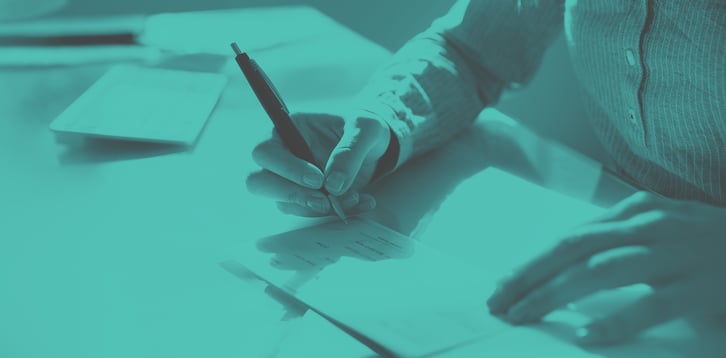
On June 5, 2020, President Trump signed the Paycheck Protection Program Flexibility Act (the Flexibility Act), which changes several important aspects of the Paycheck Protection Program (PPP). The Small Business Administration (SBA) issued guidance on June 11, 2020, to modify the first interim final rule (issued April 2) to conform to the provisions of the Flexibility Act. Further guidance was published on June 17, 2020, revising the third and sixth interim final rules to conform to the Flexibility Act. In addition, further revisions to the first interim final rule were made on June 12, 2020, to promote the criminal justice reform policies underlying the First Step Act of 2018. The rules have been frequently changing and difficult for many borrowers to keep up with. The most recent updates are summarized below.
June 11 Guidance
The revisions of the first interim final rule addressed several modifications made by The Flexibility Act:
Covered period. The Flexibility Act extends the “covered period”—the time period governing loan use, eligibility, and related requirements, which began on February 15, 2020—from June 30, 2020 to December 31, 2020.
Deferral of PPP loan payments. The Flexibility Act extends the deferral period on PPP loans, allowing borrowers who submit a loan forgiveness application to their lender within ten months after the end of their loan forgiveness covered period to avoid paying principal or interest on their loans before the SBA remits the loan forgiveness amount to the lender—or notifies the lender that forgiveness is denied. The loan forgiveness covered period has been extended from the eight-week period after the disbursement of the loan proceeds to the twenty-four-week period following loan disbursement. Borrowers who obtained PPP loans prior to the enactment of the Flexibility Act on June 5, 2020, may elect to use the original eight-week period as their loan forgiveness covered period. Borrowers who fail to submit a loan forgiveness application within ten months after the end of their loan forgiveness covered period must begin paying principal and interest at the end of that period. The Flexibility Act provides that the loan forgiveness covered period will end no later than December 31, 2020, for all borrowers.
Learn more about this topic by attending the webinar, "PPP Loan Forgiveness: Part Four" on June 25, 2020 at 1 PM ET.
Forgiveness of PPP loans. The SBA, in conjunction with the Department of the Treasury, originally determined in its first interim final rule that, for a PPP loan to be fully forgivable, 75 percent of the loan proceeds must be spent on “payroll costs.” The Flexibility Act reduced the amount of PPP loan proceeds required to be used for payroll costs to 60 percent to be eligible for full forgiveness. Although the specific language of the Flexibility Act requires a borrower to use at least 60 percent of the PPP loan proceeds for payroll costs to receive loan forgiveness, the SBA and the Department of the Treasury interpret this to be a proportional limit on nonpayroll costs as a share of the borrower’s loan forgiveness amount rather than a threshold for receiving any loan forgiveness. Thus, borrowers who use less than 60 percent of their loan proceeds for payroll costs during the forgiveness covered period are still eligible for partial loan forgiveness. However, to receive full loan forgiveness, a borrower must use at least 60 percent of the PPP loan for payroll costs and not more than 40 percent for nonpayroll costs.
Example: If a borrower receives a PPP loan of $100,000 and spends 54 percent ($54,000) on payroll costs, the borrower may receive a maximum loan forgiveness of $90,000. Payroll costs of $54,000 constitute 60 percent of the forgiveness amount and $36,000 in nonpayroll costs constitute 40 percent of the forgiveness amount, for a total of $90,000.
These amendments are effective as of March 27, 2020, as if they had been included in the CARES Act.
Maturity of PPP loans. For PPP loans made prior to June 5, 2020, the original maturity of two years is still in effect, although borrowers and lenders may agree to extend the maturity to five years. PPP loans that were made on or after June 5, 2020, have a maturity of five years. The rule states that the date the SBA assigns a loan number is the date the loan is made. The amendment to the maturity of PPP loans is effective as of June 5, 2020, the effective date of the Flexibility Act.
June 17 Guidance
On June 17, 2020, the SBA issued additional guidance revising its third interim final rule dated April 14, 2020, and sixth interim final rule dated April 28, 2020, in light of the changes to the PPP made by the Flexibility Act. The provisions in this revised interim final rule related to loan forgiveness for PPP loans are effective as of March 27, 2020. The provision relating to the maturity date of PPP loans is effective as of June 5, 2020.
As was the case with the revisions to the first interim final issued on June 12, 2020, several revisions were made to the third interim final rule to reflect consistency with the Flexibility Act’s
- extension of the covered period through December 31, 2020;
- minimum maturity of two years for PPP loans made before June 5, 2020 (unless the borrower and lender mutually agree to extend the maturity date to five years), or minimum maturity of five years for all PPP loans made on or after June 5, 2020, i.e., the date the Flexibility Act was enacted; and
- reduction of the percentage of PPP loan proceeds that must be used for payroll costs from 75 percent to 60 percent for the full amount of the PPP loan to be eligible for forgiveness.
In addition, the section of the third interim final rule addressing the amounts eligible for forgiveness was amended to reflect the extension of the covered period for loan forgiveness from the eight-week period following loan disbursement to the twenty-four-week period following loan disbursement. As noted, the borrower can elect to use the original eight-week covered period for loans made prior to June 5, 2020. This was also the only change made to the sixth interim final rule.
The third interim final rule was also revised to indicate that the actual amount of loan forgiveness will depend upon the total amount spent on
- payroll costs, including salary, wages, and tips, up to $100,000 of annual pay per employee. For twenty-four weeks, this is a maximum of $46,385 per individual, and for eight weeks, this is a maximum of $15,385 per individual. Payroll costs also include covered benefits for employees (not owners) such as health care expenses, retirement contributions, and employer-paid state taxes such as unemployment insurance premiums;
- owner compensation replacement limited to eight weeks (8/52) of 2019 net profit (up to $15,385) for an eight-week covered period or two-and-a-half months (2.5/12) of 2019 net profit (up to $20,8333) for a twenty-four-week covered period. This amount must exclude any qualified sick leave equivalent amount for which a credit is claimed under the Families First Coronavirus Response Act (FFCRA) or any qualified family leave equivalent amount for which a credit is claimed under the FFCRA; and
- payments of mortgage interest, rent payments, or utility payments incurred or in force prior to February 15, 2020, for the twenty-four-week covered period (or eight-week period if elected by a borrower whose loan was made prior to June 5, 2020).
The SBA and the Treasury also determined that limiting the forgiveness of owner compensation replacement for individuals with self-employment income who file a Schedule C or F to eight weeks of 2019 net profit for an eight-week covered period or two-and-a-half months worth of 2019 net profit for a twenty-four-week covered period per owner in total across all businesses was appropriate to prevent unintended windfalls, as Congress determined that the maximum loan amount is generally based on two-and-a-half months of the borrower’s average total monthly payroll costs during the one-year period preceding the loan. For example, a borrower with one employee would receive a maximum loan amount equal to five months of payroll, that is, two-and-a-half months of payroll for the owner and two-and-a-half months of payroll for the employee. If the owner laid off the employee and used the safe harbor set forth in the Flexibility Act from reductions in the amount of loan forgiveness for borrowers unable to return to the same level of business activity experienced before February 15, 2020, the owner could treat the entire amount of the PPP loan as payroll, and the entire amount, equivalent to five months (instead of two-and-a-half months) of payroll, could be forgiven. According to the SBA, this would result in a windfall for the owner and defeat the purpose of the CARES Act of protecting the paycheck of the employee.
June 12 Guidance
On June 12, 2020, the SBA issued another revision to the first interim final rule aimed at increasing its consistency with Congress’s intent to provide relief to small businesses as well as the policies under the bipartisan criminal justice reform law, the First Step Act of 2018. The June 12 revision increased the pool of business owners who are eligible for PPP loans by reducing the look-back period from five years to one year for nonfinancial felonies. The first interim final rule had provided that a PPP loan would not be approved if the business had an owner of 20 percent or more of its equity who was incarcerated, on probation, presently subject to an indictment, criminal information, arraignment, or other means by which formal criminal charges are brought, or had been convicted of any felony within the last five years. The SBA modified the rule so that a business with an owner of 20 percent or more of its equity who is incarcerated, on probation, on parole, presently subject to an indictment, or convicted of a felony involving fraud, bribery, embezzlement, or a false statement in a loan application or an application for federal assistance within the past five years or any other felony within the last year is ineligible for a PPP loan.
The SBA also issued an updated version of the PPP Borrower Loan Application on June 12, 2020. The deadline to apply for a PPP loan is August 8, 2020. As of June 12, 2020, approximately $129 billion in PPP funds were still available for qualified borrowers.
Updated versions of the PPP Loan Forgiveness Application and accompanying instructions, as well as a new PPP Loan Forgiveness Application Form 3508EZ and instructions, were issued on June 16, 2020. The Form 3508EZ is available for self-employed individuals, independent contractors, or sole proprietors who have no employees; borrowers that did not reduce employees’ salaries by more than 25 percent and did not reduce the number of hours of employees during the covered period; or borrowers that did not reduce the salaries or wages of their employees by more than 25 percent and were unable to operate at the same level of business activity as prior to February 15, 2020, as a result of governmental health directives related to COVID-19.



